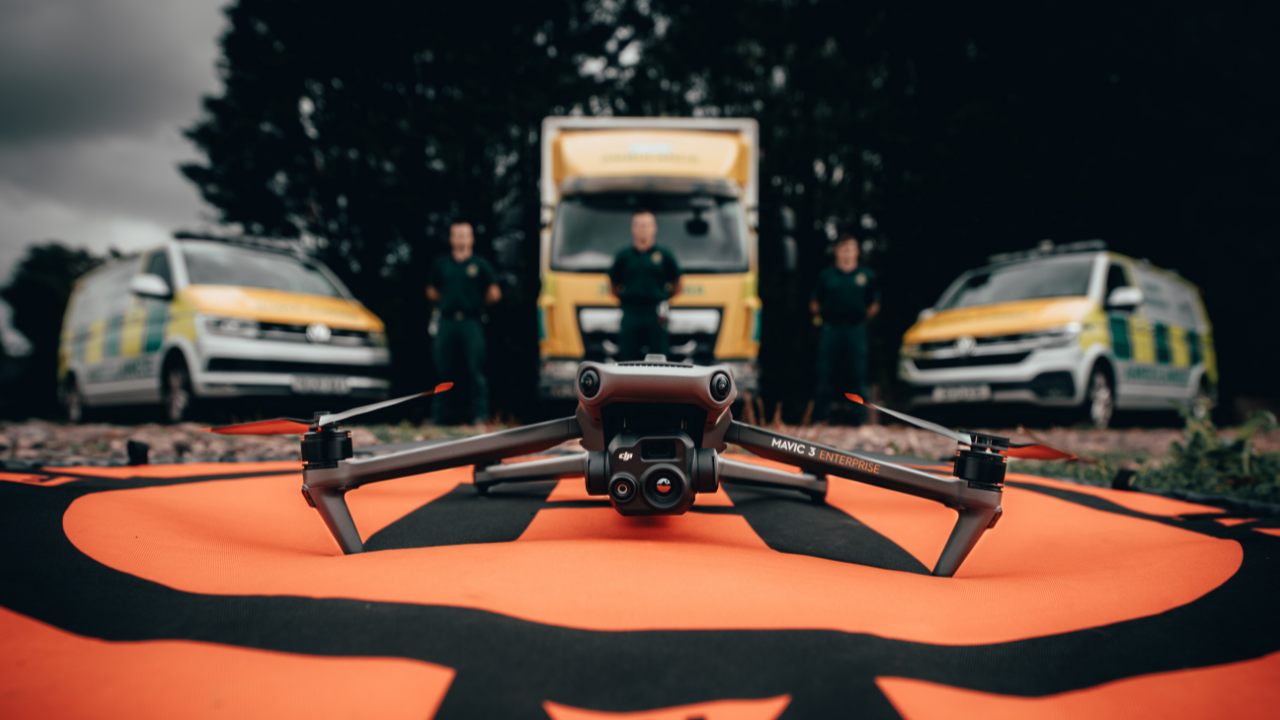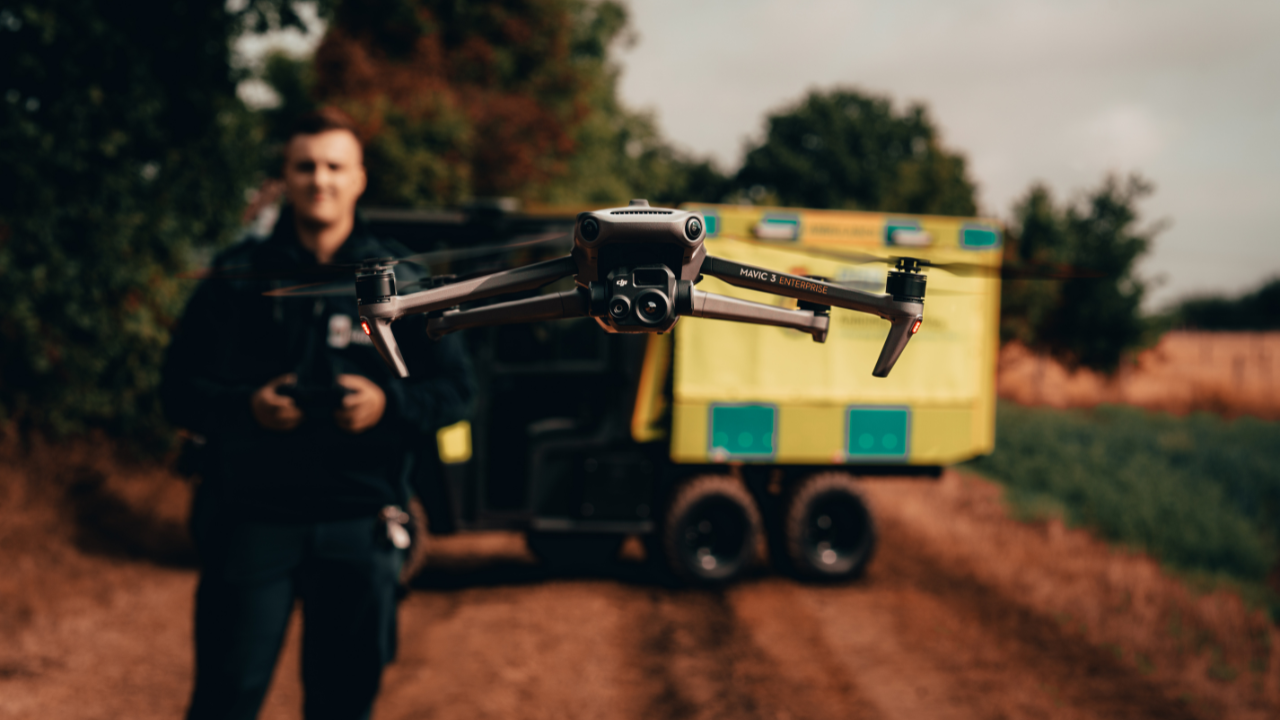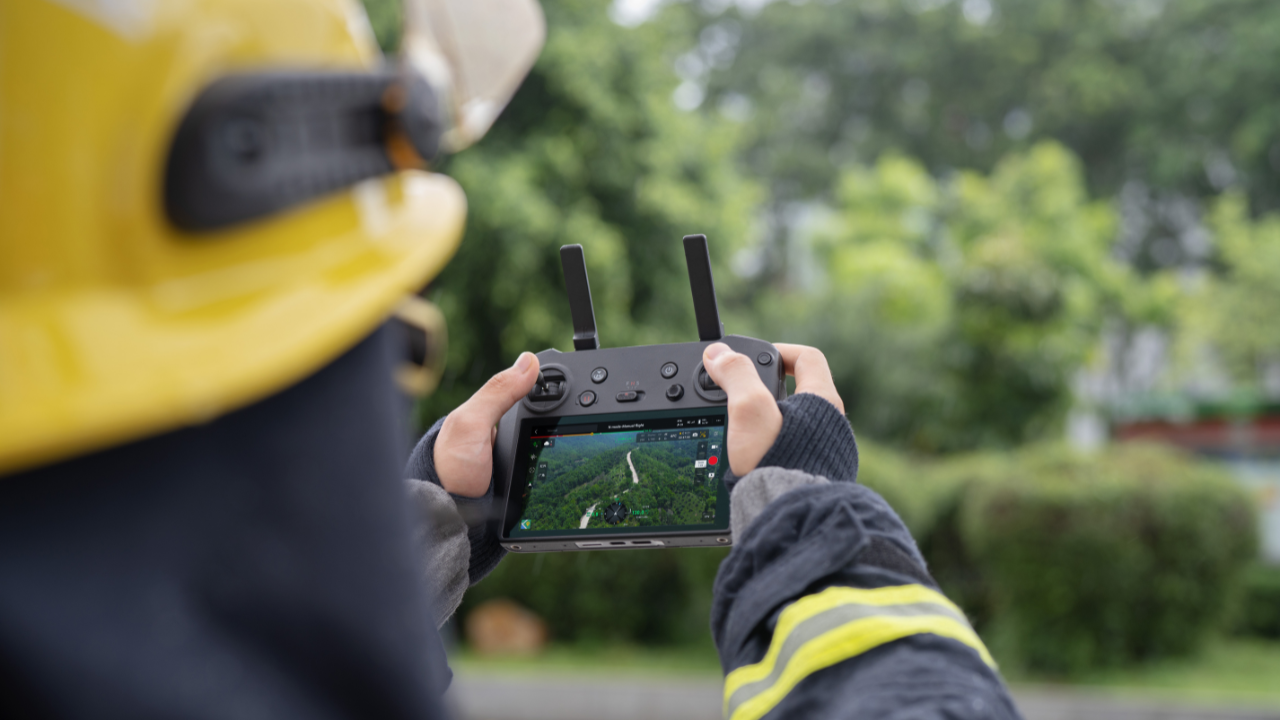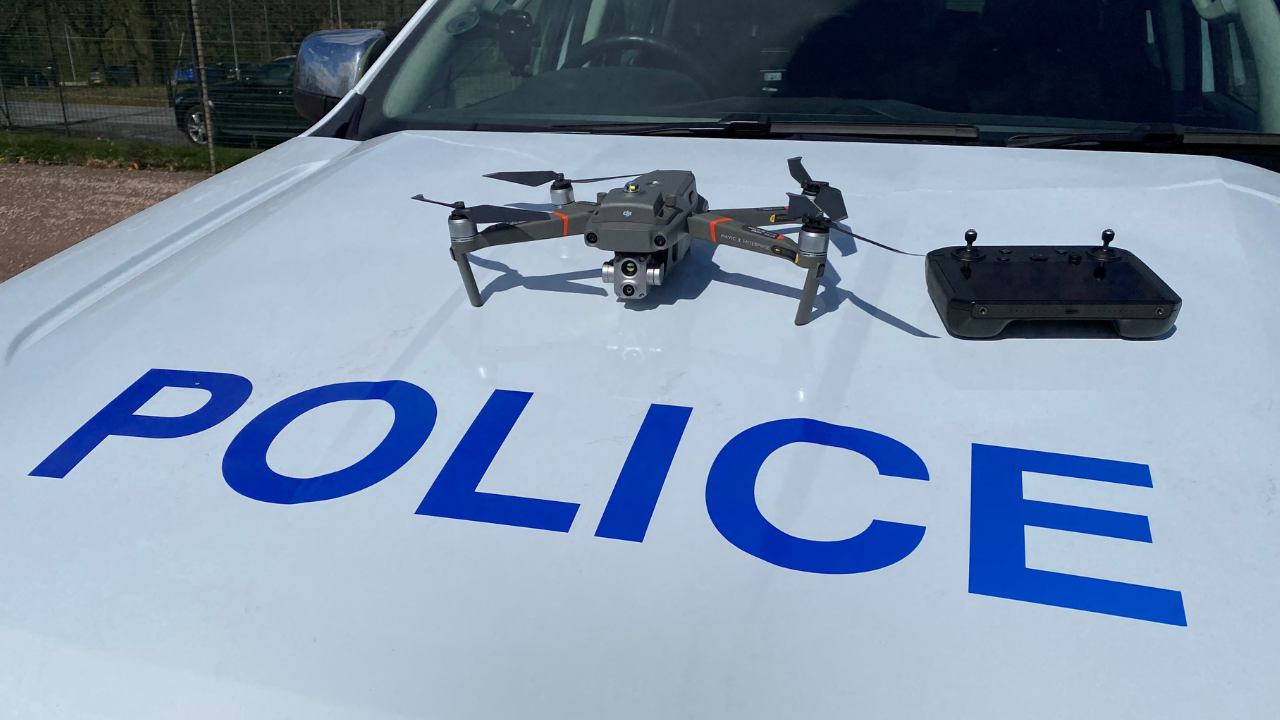
Products
DJI Mavic 3 Thermal vs DJI Mavic 2 Enterprise Advanced
In-depth comparison between the DJI Mavic 3 Thermal and Mavic 2 Enterprise Advanced drones. Find out why the Mavic 3T is an upgrade from the M2EA and how it can be used for public safety, law enforcement and inspection. ... Read More

Mavic 3 Thermal is DJI's new generation of lightweight, portable, multi-sensor drone;
Compared with the M2EA, the M3T has longer battery life, supports hybrid zooming and is compatible with DJI FlightHub 2, among other upgrades;
Both drones can capture visual and thermal data;
The Mavic 3T is touted as a successor to the M2EA and can be used for operations such as public safety, search and rescue, and inspection.
Whether it's for rapid emergency response or enhanced portability for an aerial inspection - lightweight drones can be an essential part of a UAS enterprise programme.
Up until recently, the DJI Mavic 2 Enterprise Advanced was an industry-leading compact drone which blended power with portability.
But now DJI has released the DJI Mavic 3 Thermal, part of the Mavic 3 Enterprise series, and successor to the Mavic 2 Enterprise series.

Indeed, this new generation of compact, multi-camera drone packs in much of the M2EA's key features - such as a 640 x 512 radiometric thermal sensor - but crucially improves in other essential areas, like enhanced flight time and greater visual zoom.
This blog will highlight the M3T's upgraded capabilities, compare it alongside the M2EA, and help you decide whether the Mavic 3 Thermal is worth investing in for public safety, search and rescue and inspection missions.
As a side note, the DJI Mavic 3 Thermal was launched alongside the DJI Mavic 3 Enterprise, which is engineered for high-accuracy surveying and inspection.
Mavic 3 Thermal Vs Mavic 2 Enterprise Advanced: Key Specs
The table below shows some of the drones' key specifications.
Mavic 3 Thermal | Mavic 2 Enterprise Advanced | |
Weight (without accessories) | 909g | 920g |
Camera | Wide + Tele + Thermal | Wide + Thermal |
Zoom | 56x hybrid | 32x digital |
Max Speed | 21 m/s | 20 m/s |
Max Flight Time | 45 mins | 31 mins |
Transmission Distance (CE) | 8km | 6km |
Obstacle Sensing | Omnidirectional binocular vision system | Forward/Rear/Downward binocular vision |
DJI M3T Vs DJI M2EA: Camera
For a drone of its size, the Mavic 2 Enterprise Advanced packs in powerful imaging capabilities, and the thermal sensor is noticeably better than the one on its predecessor, the Mavic 2 Enterprise Dual.
By the same token, the M3T shares many of the same camera specifications as the M2EA, but does feature some key upgrades to enable even better data collection.
Firstly, the Mavic 3 Thermal has three sensors: Wide, Tele and Thermal. In contrast, the Mavic 2 Enterprise Advanced features Wide and Thermal sensors.

There's no difference in size or resolution between the wide sensors on both drones, but the addition of the 1/2" Tele sensor enables operators of the Mavic 3T to benefit from a greater level of visual zoom, affording 56x hybrid zoom, compared to the M2EA's 32x digital zoom.
This video shows test zoom footage from the Mavic 3T, captured 30m away from the pylon.
On the visual front, the M3T and M2EA offer a 4k30p video resolution.
Both drones benefit from 640 x 512 @ 30Hz thermal resolution, which is mightily impressive - especially for the size of both aircraft. When it comes to thermal zoom, the M2EA can achieve 16x digital zoom, while the Mavic 3T can go up to 28x digital zoom.
The video below shows some test footage of the thermal camera on the Mavic 3T.
The table below provides an overview of the key camera specifications.
Mavic 3T | M2EA | |
Camera | Wide + Tele + Thermal | Wide + Thermal |
Stabilisation | 3-axis motorised (tilt, roll, pan) | 3-axis motorised (tilt, roll, pan) |
Thermal Sensor Resolution | 640 x 512 @ 30Hz | 640 x 512 @ 30Hz |
Thermal Metering Method | Spot Meter & Area Measurement | Spot Meter &Area Measurement |
Thermal Digital Zoom | 28x | 16x |
Visual Camera Sensor | Wide: 1/2" CMOS Tele: 1/2" CMOS | 1/2" CMOS |
Effective Pixels | Wide: 48MP Tele: 12MP | Wide: 48MP |
Zoom | 56x hybrid zoom | 32x digital zoom |
Video Resolution | 4k30p | 4k30p |
Mavic 3 Thermal Vs M2EA: Performance And Safety Features
The Mavic 3 Thermal and Mavic 2 Enterprise Advanced are very capable drones, but the Mavic 3T has some key upgrades.
The most significant is its extended flight time, providing 45 minutes of maximum airtime, compared to the Mavic 2 Enterprise Advanced's 31 minutes. This additional endurance will enable operators to collect even more data in a single flight - especially useful for operations like search and rescue, where every second counts.

On top of this, the Mavic 3 Thermal benefits from O3 Enterprise transmission, giving it a maximum transmission range of 8km (CE), compared to the Mavic 2 Enterprise Advanced's 6km (CE) using OcuSync 2.0.
The Mavic 3T is controlled via the new DJI RC Pro Enterprise RC, which is a smart controller with 5.5-inch 1,000-nit high-brightness screen, enhanced CPU and GPU performance, and features a built-in microphone.

In comparison, the M2EA is used with DJI's older and original Smart Controller.
The Mavic 3 Thermal also has some advanced safety features, including omnidirectional object sensing, APAS 5.0 (detects objects and bypasses them) and Advanced Return To Home (automatically determines the best route to home).
An added advantage - especially for public safety and search and rescue teams - is the Mavic 3 Thermal's compatibility with FlightHub 2: DJI's all-in-one cloud-based drone operations management platform that helps achieve comprehensive, real-time situational awareness and streamlined team communication.
The table below provides an overview of the key performance specs and safety features.
Mavic 3 Thermal | Mavic 2 Enterprise Advanced | |
Max Flight Time | 45 min | 31 min |
Max Speed | 21 m/s | 20 m/s |
Max Ascent Speed | 8 m/s (S-mode) | 6 m/s (S-mode) |
Max Descent Speed | 6 m/s (S-mode) | 5 m/s (Descend vertically) 7 m/s (Tilt) |
Max Service Ceiling Above Sea Level | 6000m | 6000m |
Max Transmission Range (CE) | 8km | 6km |
Max Wind Speed Resistance | 12 m/s (Scale 6) | 10 m/s (Scale 5) |
GNSS | BeiDou + Galileo + GPS | GPS + GLONASS |
Internal Storage | Not supported | 24GB |
Obstacle Sensing | Omnidirectional binocular vision system; Infrared sensor at the bottom of the aircraft | Forward/Rear/Downward binocular vision; Left/Right single vision; Up/Down infrared sensor |
Mavic 3T Vs M2EA: Design
Both drones are from the DJI Mavic family, so their design is very similar, ie small, lightweight and foldable - making them extremely portable.
The key design specifications are listed below:
Mavic 3 Thermal | Mavic 2 Enterprise Advanced | |
Weight (without accessories) | 920 g | 909 g |
Dimensions (L x W x H) | Folded: 221 x 96.3 x 90.3 mm Unfolded: 347.5 x 283 x 107.7 mm | Folded: 214 x 91 x 84mm Unfolded: 322 x 242 84mm |
Diagonal Distance | 380.1 mm | 354 mm |
The Mavic 3 Thermal and Mavic 2 Enterprise Advanced have a fixed payload, however, accessories can be mounted to the top of the aircraft.
Both are compatible with accessories such as a loud speaker and RTK module. The M2EA also has a spotlight accessory, which comes as standard with the drone. Currently, an official DJI spotlight is not available for the Mavic 3 Thermal, but a third-party solution may well be developed.

The Mavic 3 Thermal has a built-in flashing beacon, which can therefore be used in conjunction with one of the accessories. In contrast, the beacon is a stand-alone module for the M2EA, so can't be used alongside another add on, like the speaker or RTK Module.
The RTK Module for the Mavic 3T supports TimeSync and improves georeferencing accuracy, to a level of within 10cm to 20cm accuracy. This means that the Mavic 3T can be used for some surveying missions and thermal mapping, but is not really the tool of choice for high-precision centimetre-accurate mapping. In this case, the Mavic 3E is the better option.
In contrast, the RTK Module for the Mavic 2 Enterprise Advanced provides the drone with centimetre-level flight positioning accuracy.
Aside from the RTK Module, accessories like the speaker, spotlight and beacon come as standard with the Mavic 2 Enterprise Advanced, whereas the speaker and RTK Module need to be purchased separately for the Mavic 3 Thermal.
DJI Mavic 3 Thermal Vs Mavic 2 Enterprise Advanced: Summary
When DJI first unveiled the Mavic 2 Enterprise Series back in 2018, this new range of enterprise aircraft was revolutionary - packing plenty of capability into a tiny frame.
The Series evolved, culminating in the powerful Mavic 2 Enterprise Advanced in 2020, with upgraded imaging quality, especially the thermal sensor.
Continuing to innovate, DJI has released the Mavic 3 Thermal, which further expands the capabilities of this portable, lightweight, multi-sensor aircraft series.
And with additional flight time, a greater range of visual zoom, enhanced safety features and compatibility with DJI FlightHub 2, the Mavic 3T is a step up from the M2EA and offers a quality aerial tool for public safety, search and rescue and inspection missions.
Contact heliguy™ to start or scale your drone programme with the DJI Mavic 3 Thermal.
